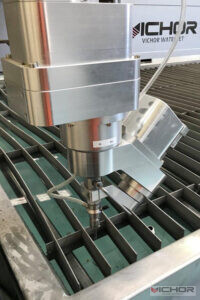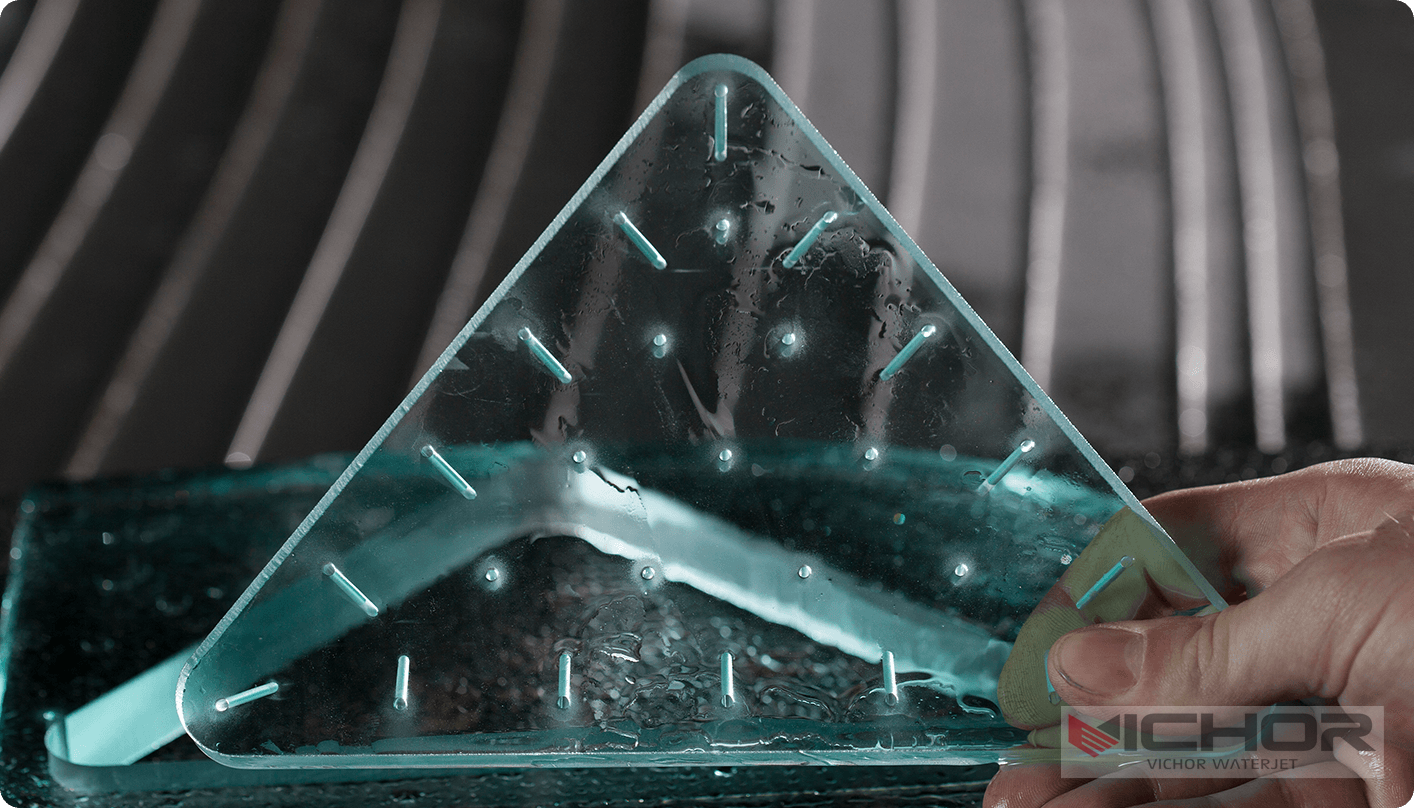
Precision Without Compromise: Exploring the Power of Water Jet Steel Cutting Machines
In the world of industrial fabrication and manufacturing, precision and versatility are paramount. Among the various technologies available for shaping materials, one stands out for its unique ability to cut without altering the intrinsic properties of the material it works on: the water jet steel cutting machine. This technology harnesses the raw power of water, and often abrasive materials, to slice through thick slabs of steel with astonishing accuracy. Unlike thermal cutting methods that rely on extreme heat, waterjet cutting is a cold process, making it the preferred choice for applications where heat-affected zones are a critical concern. This article delves deep into the mechanics, advantages, and diverse applications of this remarkable technology, providing a comprehensive overview of why it has become an indispensable tool in modern workshops.
How a Water Jet Steel Cutting Machine Actually Works
At its core, the principle behind a water jet steel cutting machine is deceptively simple: force a vast amount of water through a tiny orifice at extremely high pressure to create a supersonic stream capable of cutting. However, the engineering that makes this possible is highly sophisticated.
The process begins with a high-pressure pump, which is the heart of the system. This pump intensifies regular tap water to pressures ranging from 60,000 to 90,000 Pounds per Square Inch (PSI). This ultra-high-pressure water is then forced through a narrow jewel orifice, typically made from sapphire or diamond, forming a coherent and incredibly fast stream moving at speeds up to three times the speed of sound.
For cutting hard materials like steel, a pure waterjet is not sufficient. This is where the abrasive component comes in. In an abrasive water jet steel cutting machine, the pure water stream is fed into a mixing chamber, where a precise amount of garnet abrasive is introduced. The water stream accelerates these abrasive particles, which are then focused through a ceramic mixing tube (or nozzle). It is this erosive action of the hard abrasive particles, propelled by the high-velocity water, that does the actual cutting of the steel. The machine is controlled by Computer Numerical Control (CNC), which guides the cutting head along the programmed path with extreme precision, enabling it to produce complex and intricate shapes from digital designs.
The Unmatched Advantages of Using a Water Jet for Steel
Choosing a water jet steel cutting machine over other cutting methods offers a suite of compelling benefits that directly impact quality, cost, and capability.
No Heat-Affected Zone (HAZ): This is the most significant advantage. Plasma, laser, and oxy-fuel cutting generate intense heat, which alters the metallurgical structure of the steel along the cut edge. This can cause hardening, warping, and changes in material properties. Since waterjet cutting is a cold process, it completely eliminates the HAZ, preserving the steel’s original temper, hardness, and structural integrity.
Versatility in Material Cutting: While our focus is steel, a single water jet steel cutting machine can cut a breathtaking array of materials. From soft materials like rubber, foam, and food products using a pure waterjet, to extremely hard materials like titanium, granite, and composites using the abrasive method, it is the ultimate all-in-one cutting solution. This eliminates the need for multiple dedicated machines.
High Precision and Edge Quality: Modern CNC-controlled waterjets are exceptionally accurate, capable of holding tolerances within a few thousandths of an inch. The cutting process produces a smooth, sandblasted finish on the edge. While it may not be as polished as a laser-cut edge, it is often sufficient for many applications and can be further finished if required.
Environmental and Safety Benefits: Waterjet cutting does not produce hazardous fumes or vapors as no combustion or melting occurs. The process primarily generates spent water and abrasive, which can be collected and managed effectively. It is a much cleaner and safer process compared to thermal cutting methods.
Minimal Set-Up and No Tooling Changes: Unlike machining or punching, there are no physical tools or dies to changeover between jobs. Switching from cutting a complex pattern in 6-inch thick steel to a different pattern in 1-inch steel requires only a change in the digital CAD file, not the machine’s physical setup.
Key Applications Across Industries for Water Jet Cutting
The unique capabilities of the water jet steel cutting machine have made it a critical asset in a wide range of industries where precision and material integrity are non-negotiable.
Aerospace and Defense: This sector relies on waterjets for cutting high-strength alloys, titanium, and aluminum components. The absence of heat ensures the material’s fatigue life and strength are not compromised, which is absolutely critical for flight safety.
Architecture and Metal Art: From intricate decorative panels and signage to large structural components, waterjets allow designers and artists to create incredibly complex and detailed patterns in steel and other metals that would be impossible or prohibitively expensive with other methods.
Automotive and Transportation: Manufacturers use waterjets for prototyping parts, creating custom brackets, and cutting composite materials for interiors. The ability to quickly shift from one material to another makes it ideal for research and development.
Machine and Fabrication Shops: For general fabrication, a water jet steel cutting machine is a workhorse. It is used to cut parts for machinery, tools, and frames. Its ability to cut thick materials and bevel edges (by tilting the head) makes it perfect for preparing parts for welding.
Mining and Heavy Machinery: These industries require extremely durable parts made from thick, hard steel plates and wear-resistant materials. Waterjets are one of the few technologies that can efficiently and precisely cut these demanding materials.
Essential Components of a Modern Water Jet System
Understanding the key parts of a water jet steel cutting machine helps in appreciating its complexity and performance.
High-Pressure Pump: The system’s powerhouse. There are two main types: intensifier pumps (which use hydraulic pressure to drive a piston) and direct-drive pumps (which use a crankshaft). Intensifier pumps are more common for high-power industrial applications.

CNC Motion System: This consists of a robust gantry or bridge structure that moves the cutting head along the X and Y axes with high accuracy. High-quality motors and drives ensure smooth, precise motion to achieve the desired cut quality.
Cutting Head: This includes the orifice (for creating the initial water stream), the abrasive mixing chamber, and the focusing tube (nozzle). These are consumable parts and are designed for durability and optimal abrasive mixing.
Abrasive Delivery System: This subsystem stores and meters the garnet abrasive into the cutting head. Consistent and uninterrupted abrasive flow is crucial for a uniform cut.
Catcher Tank: Located beneath the cutting table, the tank holds water and captures the spent abrasive and cut parts. It reduces noise and contains the immense energy of the water stream after it has passed through the material.
Control Software: The operator’s interface. Advanced software converts CAD drawings into machine commands (G-code), controls all machine functions, and allows for features like automatic head height control to maintain optimal standoff distance.
Selecting the Right Water Jet Steel Cutting Machine for Your Needs
Investing in a water jet steel cutting machine is a significant decision. Several factors must be considered to ensure the right fit for your operation.
Pump Pressure and Power: Higher pressure (e.g., 90,000 PSI vs. 60,000 PSI) generally allows for faster cutting speeds, especially in thicker materials. Determine the typical thickness of steel you will be cutting to guide your pump requirement.
Table Size and Configuration: The cutting table must be large enough to accommodate your largest workpieces. Consider standard sizes or custom-built tables. Options include slat tables, which allow for cutting of nested parts, and water-filled tables to reduce splash and noise.
5-Axis Capability: A standard machine moves in X, Y, and Z. A 5-axis water jet steel cutting machine adds two rotational axes (A and B), allowing the head to tilt and create tapered cuts or beveled edges on parts. This is a vital feature for welding preparation.
Operating Costs: Beyond the initial purchase price, consider the costs of electricity, water, abrasive garnet (a major consumable), and replacement parts like orifices and nozzles. A more efficient machine might have a higher upfront cost but lower operating expenses.
Software and Support: User-friendly and powerful software dramatically improves productivity. Equally important is the technical support, training, and service provided by the manufacturer or distributor.
In conclusion, the water jet steel cutting machine represents a pinnacle of flexible, precise, and material-friendly cutting technology. Its ability to cold-cut any material, from the softest to the hardest, without altering its fundamental properties, makes it an invaluable asset across countless industries. By understanding its workings, benefits, and applications, manufacturers can leverage this powerful technology to enhance their capabilities, improve product quality, and unlock new design possibilities. As technology continues to advance, with improvements in pump efficiency, cutting speed, and automation, the role of the waterjet is set to become even more central in the future of manufacturing.
continue reading


